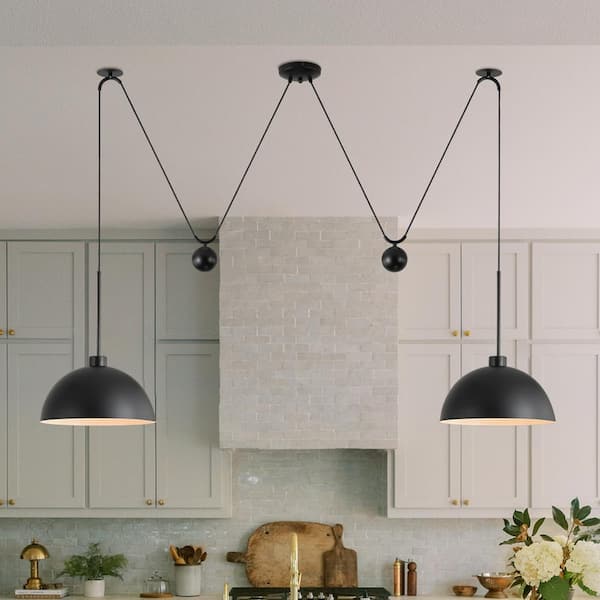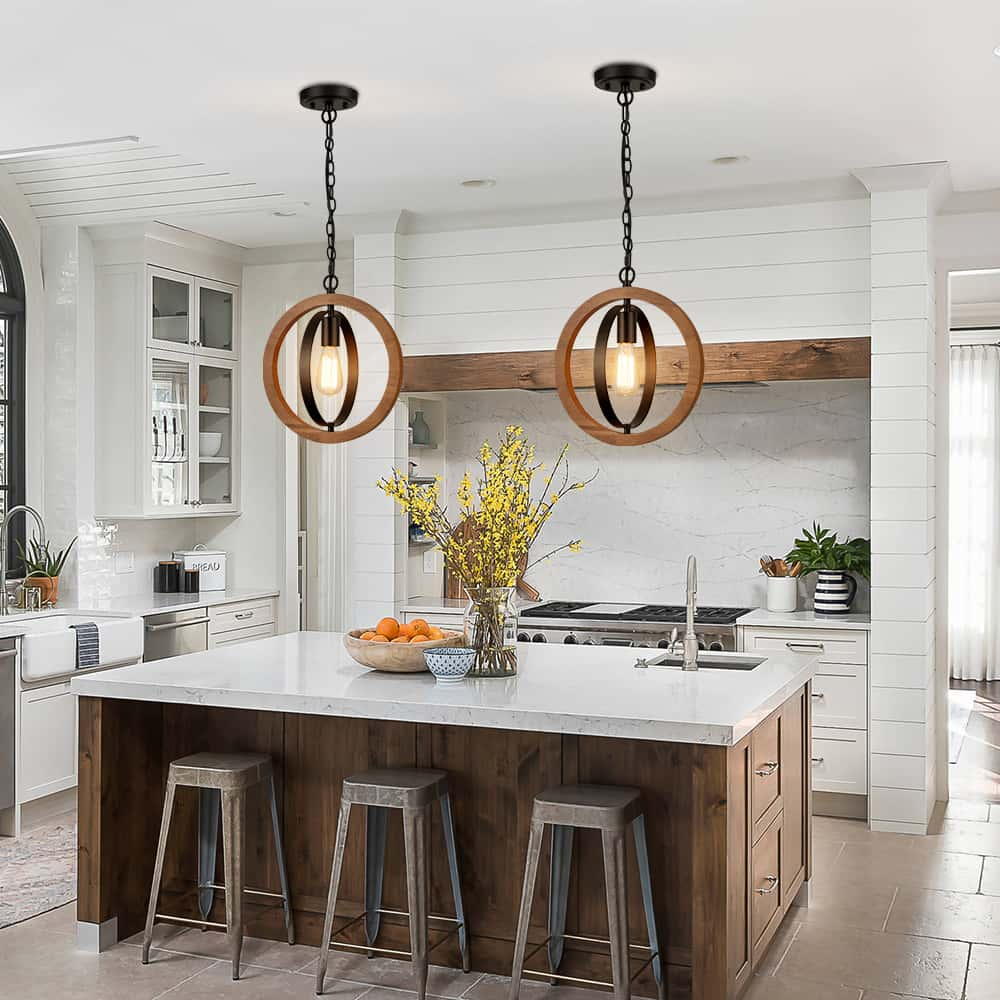Just how to Select the Perfect Pendant Light to Improve Your Inside Design
Picking the perfect Pendant light requires cautious consideration of different components. The design must align with the general decoration, while size plays a vital role in ensuring correct percentage. Shade and finish options can improve visual charm. Additionally, reviewing light result is important for capability - Pendant Light. Recognizing these aspects can transform an area, producing an inviting ambience. Yet, the procedure entails greater than just visual appeal; there are functionalities that must also be attended to

Understanding Different Pendant Light Styles
Pendant lights can be found in a range of styles, each offering unique visual and functional advantages. From commercial layouts that include revealed bulbs and metal finishes to stylish glass components that stimulate a sense of sophistication, the alternatives are large. Contemporary Pendant lights commonly emphasize clean lines and minimal forms, while vintage-inspired styles may integrate detailed outlining and warm tones.
For those seeking a rustic charm, fixtures made from natural products like wood or rattan provide a comfortable feeling. Furthermore, multi-light necklaces can work as declaration items, integrating several light bulbs in a single style for remarkable impact.
Each style adds in different ways to a space, affecting the general setting and personality. Comprehending these varied Pendant light designs enables property owners and designers to make enlightened options that line up with their interior decoration vision, boosting both performance and aesthetic allure in their environments.
Determining the Right Size for Your Room
When picking a necklace light, accurately measuring the ceiling elevation is important for attaining the right balance in an area. Additionally, computing the scale of the fixture in connection with the surrounding room assurances that the light matches as opposed to overwhelms the design. These factors play a vital role in producing an unified indoor environment.
Measure Ceiling Height
To achieve an aesthetically pleasing style, determining ceiling height is crucial for choosing the proper dimension of Pendant light. The height of the ceiling directly affects the range and proportion of the illumination fixture. In areas with typical eight-foot ceilings, Pendant lights must normally spend time 30 to 36 inches above the surface area below, such as a dining table or kitchen island. For greater ceilings, adjustments have to be made as necessary, as a higher installment can create a more significant result. It is very important to review the overall space measurements and design when figuring out the ideal elevation. Precise measurements aid assure that the Pendant light not only enhances the space's design yet also provides appropriate illumination without frustrating the space.
Compute Fixture Range
Picking the best size for an illumination fixture is crucial for producing harmony in an area's style. To calculate component scale, one have to take into consideration the dimensions of the room. An usual standard involves adding the area's length and width in feet, which provides an ideal diameter in inches for a pendant light. A room determining 10 feet by 12 feet recommends a fixture size of about 22 inches. Furthermore, the height of the ceiling plays a critical function; taller ceilings might accommodate bigger fixtures. Making sure the Pendant hangs at a proper elevation-- typically 30 to 36 inches above surfaces-- further enhances functionality and aesthetic charm. Effectively scaled components can change an area, making it feel inviting and well-coordinated.
Thinking About Color and Finish Options
When selecting a pendant light, the interaction of shade and coating can considerably impact the total visual of a space. Working with the light's shade scheme with existing design ensures an unified layout, while the option of coating product can improve texture and style. Thoughtful consideration of these elements is vital for achieving a natural look in interior decoration.
Shade Scheme Sychronisation
Color combination control plays an important duty in accomplishing an unified interior decoration, specifically when picking pendant lights. Selecting a pendant light that enhances the existing color pattern boosts the total visual. As an example, a light with cozy tones can create a cozy ambience in a space loaded with natural colors, while cooler tones might balance successfully with a contemporary, minimalist palette. It is vital to take right into account the leading colors in the area, ensuring that the Pendant light either blends perfectly or provides a striking contrast. In addition, integrating accent colors from the scheme can tie the design with each other, producing a natural appearance. Ultimately, thoughtful shade coordination boosts the aesthetic effect of the Pendant light within the interior decoration system.
Complete Product Considerations

The option of finish materials for Pendant lights significantly affects the total design visual of an area. Different finishes, such as matte, glossy, or distinctive, can produce differing aesthetic impacts. As an example, a sleek metal finish might stimulate a modern-day, industrial atmosphere, while a matte or brushed finish can offer a softer, extra natural feeling. Shade alternatives, varying from timeless blacks and whites to dynamic colors, additionally play a vital function in balancing with existing design. In addition, products such as glass, timber, or ceramic can improve the Pendant's character and complement surrounding elements. Ultimately, selecting the appropriate surface product ensures the Pendant light not just lights up however also enhances the room's design story.
Assessing Light Output and Functionality
Light result and capability are fundamental consider choosing the excellent Pendant light for any kind of room. Reviewing the brightness of a necklace light entails recognizing lumens, which determine the total light emitted. A greater lumen matter generally suggests a brighter light, necessary for tasks such as reading or food preparation. Additionally, the shade temperature, measured in Kelvin, influences the ambiance; warmer tones produce a relaxing ambience, while cooler tones promote alertness.
Capability prolongs past illumination to include the component's style and placement. Adjustable necklaces can offer flexible see here lights for different activities, while taken care of choices include a declaration to the design. Furthermore, taking into consideration the elevation at which the Pendant will certainly hang is essential, as it influences both light circulation and security. Eventually, a well-assessed light result and capability will certainly ensure that the chosen Pendant light meets both visual and sensible demands in the intended space.
Matching Pendant Lights With Your Interior Style Style
Exactly how can one ensure that Pendant lights improve the general indoor design style of a room? The key hinge on selecting fixtures that reverberate with the established visual. In a minimal setting, smooth and basic styles in neutral shades can create a cohesive appearance. Alternatively, a vintage-themed space might benefit from elaborate Pendant lights, featuring complex styles or warm tones that stimulate nostalgia.
Furthermore, taking into consideration the product and finish of the Pendant light is important. Steels like brass or copper can add a touch of sophistication to a contemporary space, while timber components might complement rustic insides.
Shade consistency additionally plays a significant function; choosing shades that straighten with the area's combination guarantees that the lights really feels integrated as opposed to misplaced. Eventually, the right Pendant lights must not just light up however likewise function as a stylistic expansion of the general layout, improving the ambiance and character of the area.
Setup and Placement Tips for Optimum Influence

In larger rooms, think about making use of bigger clusters or necklaces to stop them from feeling lost in the area. For an open-concept format, aligning the necklaces with various other layout elements, like kitchen counters or furnishings lines, promotes cohesion. Furthermore, dimmer switches can boost convenience, permitting flexible setting. Ultimately, thoughtful installment and positioning of Pendant lights can transform the appearances and performance of any kind of interior decoration.
Frequently Asked Concerns
What Are the Ideal Materials for Pendant Lighting?
The most effective products for Pendant lights include glass for beauty, metal for longevity, and textile for heat. Each material uses distinct looks, allowing developers to create versatile lighting options that enhance numerous indoor styles and ambiences.
Just how Do I Keep and Tidy Pendant Lights?
Preserving and cleansing pendant lights entails normal dusting, utilizing a damp fabric for surface areas, and using mild cleansers for glass parts. Normal look for loose fittings ensure safety and prolong the life expectancy of the fixtures.

Can Pendant Lights Be Dimmable?
The inquiry of whether Pendant lights can be dimmable is pertinent for lots of. Different designs offer dimmable attributes, allowing users to change brightness, improving ambiance and functionality. Compatibility with dimmer buttons is necessary for peak performance.
What Is the Life-span of Typical Pendant Light Bulbs?
The lifespan of regular Pendant light bulbs differs considerably. Incandescent light bulbs last concerning 1,000 hours, while small fluorescent lights (CFLs) can last 7,000 to 15,000 hours. LED light bulbs provide the longest lifespan, rising to 25,000 hours or even more.
Are Pendant Lighting Suitable for Outdoor Usage?
Pendant lights can be appropriate for outside usage, but they should be specifically designed for such settings. Weather-resistant products and appropriate installation are necessary to ensure resilience and safety against components like moisture and wind.
Color combination coordination review plays a necessary duty in achieving an unified interior style, specifically when picking pendant lights. The selection of coating materials for Pendant lights substantially affects the overall style visual of a space. Light output and functionality are basic elements in selecting the excellent Pendant light for any type of area. Assessing the illumination of a pendant light includes understanding lumens, which determine the complete light produced (Pendant Light). How can one guarantee that Pendant lights boost the overall indoor design style of anchor a room?